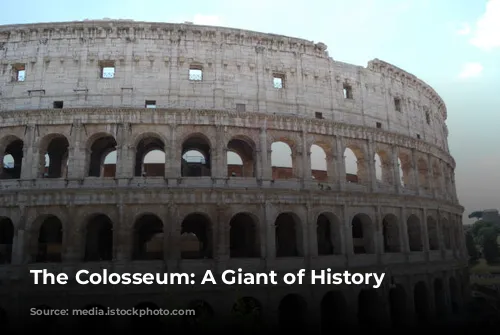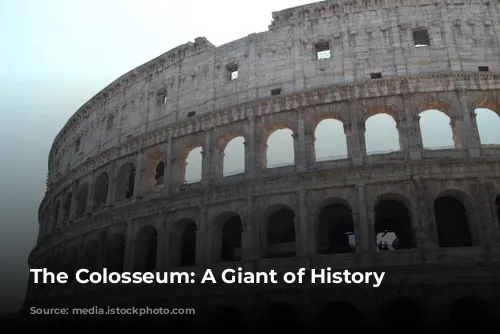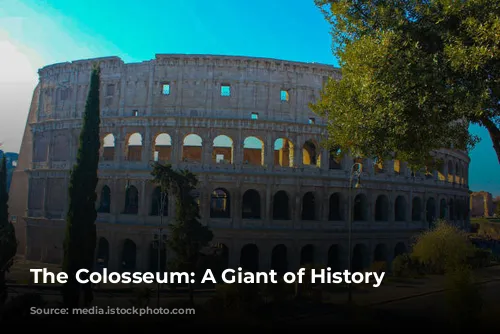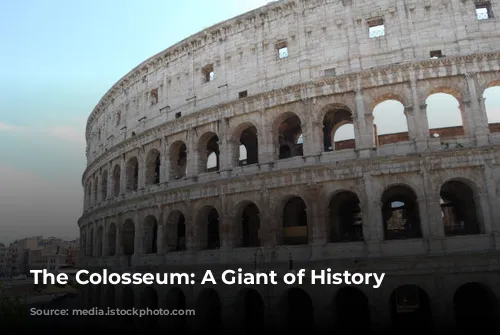The Colosseum in Rome, once known as the Flavian Amphitheatre, stands as a testament to the grandeur of the Roman Empire. This iconic structure, the largest and most imposing amphitheatre in the Roman world, is a marvel of engineering and architecture.
Construction & Design: A Masterpiece of Roman Engineering
Emperor Vespasian, a member of the Flavia family, initiated the construction of the Colosseum, which was completed and inaugurated by his son, Titus, in 80 AD. Its highly ostentatious opening ceremony, lasting a staggering one hundred days, featured spectacles that showcased the might and power of the Roman Empire. The crowds witnessed breathtaking gladiatorial combats, exotic animal hunts, and even naumachias – dramatic sea battles recreated within the arena. Imagine the scene, the arena floor transformed into a vast lake, with warships clashing in a spectacle of water, fire, and fury.
The Name: A Legacy of History and Prophecy
The Colosseum’s name, though not its original designation, holds a captivating story. The Venerable Bede, a medieval monk, famously prophesied that Rome would endure as long as the Colosseum remained standing. This prophecy linked the Colosseum’s fate to the fate of Rome, and ultimately, the world. It’s likely that Bede derived the name from the massive statue of Emperor Nero’s Colossus, a towering bronze figure that once stood near the amphitheatre, although it has since been destroyed.
An Architectural Triumph: A Symphony of Arches and Stone
The Colosseum’s sheer size and architectural ingenuity are awe-inspiring. Imagine a vast, elliptical structure, completely sheathed in gleaming white travertine stone – a testament to Roman craftsmanship. The structure boasted four tiers, with the first three tiers featuring eighty arches each. The second and third tiers were adorned with majestic statues, adding to the Colosseum’s grandeur.
It’s astonishing to consider that this imposing structure was completed in less than ten years. The secret to the Romans’ remarkable speed lay in their masterful use of the arch. The arch, a fundamental element of Roman architecture, allowed them to distribute weight effectively, enabling the construction of colossal structures. Just think of the iconic Roman aqueducts, a testament to the power of the arch.
A Glimpse into the Past: Deconstruction and Rediscovery
Today, the Colosseum stands as a skeleton of its former glory – a haunting reminder of its rich history. The loss of three-fifths of the outer brick wall tells a story of neglect and exploitation. During the Middle Ages, the Colosseum’s stones, lead, and iron were plundered to build other Roman structures, including the Barberini Palace, Piazza Venezia, and even St. Peter’s Basilica.
These remnants of the past are visible today in the holes drilled into the Colosseum’s columns, the scars of its extraction. They offer a glimpse into the centuries-long history of plunder and repurposing.
A Seat for All: Social Divisions and Spectacle
The Colosseum could accommodate up to seventy thousand spectators, providing a captivating experience for all. The tiered seating arrangement, ingeniously designed for optimal viewing, also reflected the social hierarchy of Roman society. The commoners were relegated to the upper tiers, while those of higher social standing, including senators, vestals, priests, and the emperor himself, occupied the lower tiers, closer to the arena’s action.
Like modern stadiums, the Colosseum also boasted an ingenious roof covering called the Velarium, a massive linen awning that could be manipulated using ropes, winches, and wooden poles. This intricate system, operated by one hundred sailors from the Imperial fleet, provided protection from the sun’s relentless rays, creating an optimal viewing experience for the captivated audience.
The Arena: A Stage for Gladiators and Beasts
Stepping into the Colosseum, you’re immediately drawn to the arena, the heart of the spectacle. The arena floor, once a blend of brick and wood, has vanished over time, revealing the underground cellars where the games were prepared.
These cellars housed lifts and hoists, their rails still visible today, which were used to raise animals and gladiators into the arena through hidden trapdoors, creating a sense of awe and surprise. The complex system of hinges and lifts even allowed for the raising of elaborate backdrops used for the hunts, transforming the arena into a captivating stage.
Games and Spectacles: A Symphony of Blood and Entertainment
The Colosseum’s spectacles were a blend of symbolism and entertainment, designed to forge a connection between the citizens and their leader through shared experiences. These events also provided a distraction from political turmoil, offering the populace a much-needed escape.
The Colosseum’s schedule was carefully crafted, offering a variety of entertainment throughout the day. The morning featured Venationes, thrilling hunts involving exotic animals and even dangerous encounters between men and beasts. These spectacles sometimes served as a form of public execution, leaving condemned individuals to the mercy of ferocious animals. The Silvae, elaborate recreations of forests complete with trees, bushes, and animals, offered a less violent and more unique spectacle.
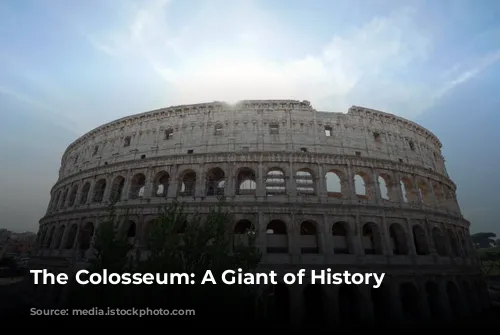
The Gladiators: Legends of the Arena
However, the most celebrated events were undoubtedly those featuring gladiators – skilled warriors who captivated the crowds with their bravery and skill. The term “gladiator” derives from the “Gladius”, the short sword used by Roman legionaries. These warriors, often prisoners of war or impoverished individuals, were drawn to the arena by the promise of fame, fortune, and perhaps even freedom.
Gladiators, like modern sports stars, enjoyed immense popularity, especially among women, who lavished attention and even money on these valiant fighters. The Colosseum witnessed a diverse cast of gladiators, each with their unique style and weaponry, engaging in fierce combat.
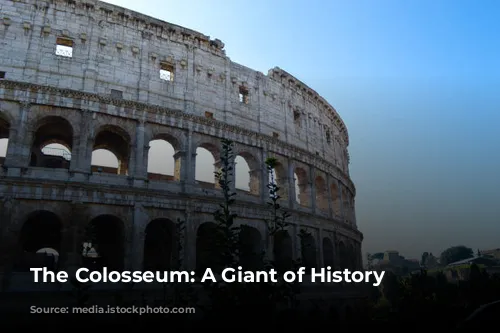
Blood and Glory: The Thrill of the Fight
The defeated gladiator could appeal for mercy by raising an arm, a dramatic gesture that elicited a roar from the crowd. The emperor, perched on his stage, had the power to decide the gladiator’s fate – a thumbs-up meant mercy, a thumbs-down meant death.
The victorious gladiator was rewarded with golden palm leaves and a substantial sum of money, a testament to their prowess. The Colosseum’s violent spectacles, though appalling by today’s standards, held a fascination for Roman audiences, a sentiment that can be compared to modern-day “splatter” cinema.
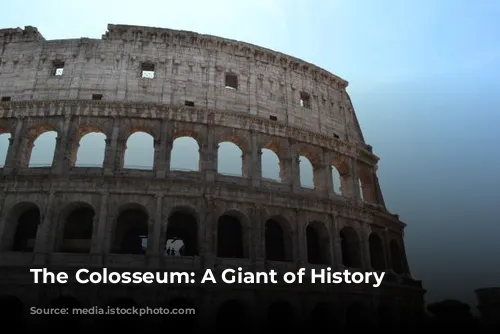
A Legacy of Worship and Remembrance
The Colosseum, once the epicenter of brutal spectacles, became a symbol of Christian suffering after the fall of the Roman Empire. Threatened with demolition by Pope Sixtus V, the Colosseum was declared a sacred monument dedicated to the Passion of Christ by Pope Benedict XIV, who placed a cross at its center. This symbolic gesture transformed the Colosseum into a place of pilgrimage, honoring the martyrdom of Christians.
Today, the Colosseum stands as a powerful reminder of Rome’s grandeur and its complex history, a timeless symbol of both brutality and redemption. Standing within its ruins, you can almost hear the echoes of the roaring crowds, the clash of swords, and the cries of the fallen, a reminder of the enduring power of this ancient monument.
